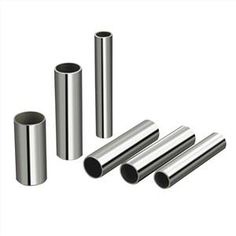What is a 321 Stainless Steel Tube?
Stainless steel is one of the most versatile materials that you can use in many different applications. The reason that it is so versatile is because of the wide range of metals that you can use with it. You will find that there are many different types of stainless steel, but the most common are 304 and 321 stainless steel tubes or Duplex Stainless Steel 2507. You will need to know which type you need to purchase for your specific application.

Source:https://i.pinimg.com
Exhaust systems
Stainless Steel 321 Tube is a good choice for a variety of exhaust system applications. It provides good strength properties and high resistance to fatigue. It also has good resistance to intergranular corrosion. It is ideal for fabricated headers and exhaust manifolds. It has an excellent temperature endurance in both enclosed and open applications.
When choosing a tubing material for an exhaust system, the most important consideration is its durability and longevity. Stainless Steel has an excellent strength-to-weight ratio at elevated temperatures. Stainless Steel also has excellent rust-resistance and is able to resist a wide range of inorganic and organic chemicals.
Stainless steels are available in a wide range of tubing sizes like in Stainless Steel Coil. There are also a number of special alloys that stabilize chromium at high temperatures. This prevents the formation of chromium carbide.
For applications with high heat and pressure, the ideal alloy is 321 stainless steel. This alloy contains titanium to provide good stability at high temperatures. This material is also resistant to intergranular corrosion and is structurally strong.

Source:https://i.pinimg.com
Food processing equipment
Stainless steel is commonly used in the food processing industry for the manufacture of utensils, containers, and equipment. Stainless steel is strong and can withstand certain chemicals. The material is also resistant to corrosion. However, it should be carefully inspected and maintained. If used in an environment where food is handled, a stainless steel material must meet the strict requirements of the FDA.
304 and 316 are the most common types of food grade stainless steel. These materials are non-magnetic and can be easily cleaned. However, they are not ideal for marine environments. For applications that require a less demanding corrosion resistance, a 17% chromium ferritic stainless steel is recommended.
Stainless steels are used in a variety of industries, and there are different types of alloys to choose from. These include annealed, forged, and tempered. They are available in round bars, flat bars, and plates.
Stainless steel has a great appearance and is durable. It is also highly versatile. It can be used for a wide range of applications, and can be welded without deformation.
Heat-related corrosion resistance
Stainless steel 321 is an austenitic chromium-nickel alloy that is used to make pipes, boilers, heat exchangers, and other structural components. It exhibits excellent resistance to most oxidizing agents and most organic chemicals. Moreover, it is corrosion resistant at a range of temperatures. It is widely used in engine turbines, chemical process plants, and nuclear reactors.
Alloy 321 and 347 are widely used in equipment that operates between 800degF and 1500degF. They are also used in applications where intergranular corrosion is important. They are also used in heavy welded equipment. In the case of the SS347, a stabilizing element (Ti) is added to prevent the formation of chromium carbides during welding. The stabilized alloy is resistant to stress corrosion cracking, even under moderate temperature conditions.
In addition to the austenitic characteristics, alloy 321 and Stainless Steel Coil 304L also exhibits a high resistance to heat-related corrosion. It can resist oxidation and stress-related corrosion at temperatures as low as 600 degC. This makes it suitable for use in cryogenic conditions. However, it does not perform well in sulfuric acid service. It is recommended to choose a different grade, if corrosion is a major concern.
Resistance to chromium carbide formation
During welding, the formation of chromium carbide depletes chromium corrosion resistance. The alloying elements, Ti and Nb, help prevent chromium carbide precipitation.
The formation of chromium carbide can be reversed by annealing. Solution annealing is done by heating the material to 1550 to 1650deg F. This treatment dissolves the chromium carbide and prevents intergranular attack. It also eliminates the chromium-depleted region of the alloy.
In the case of alloy 347 as well as the Duplex Stainless Steel 2205, niobium has been added to strengthen the material. Its performance is better than regular Alloy 304 stainless steel pipe. It is recommended for application in high-temperature environments. It is less resistant to general corrosion in strongly oxidizing environments.
The main reason for stress corrosion cracking is the presence of halide ions. These ions react with moisture to form polythionic acids. The corrosion attack occurs at the grain boundaries.
Several types of alloys are used to protect against intergranular corrosion. Some of these are grade 304, 316L, and 316H. These grades are stabilized with titanium. The stabilizing element has more affinity for carbon than chromium. It also stabilizes the alloy, thus reducing the probability of stress fracture.


No comments yet